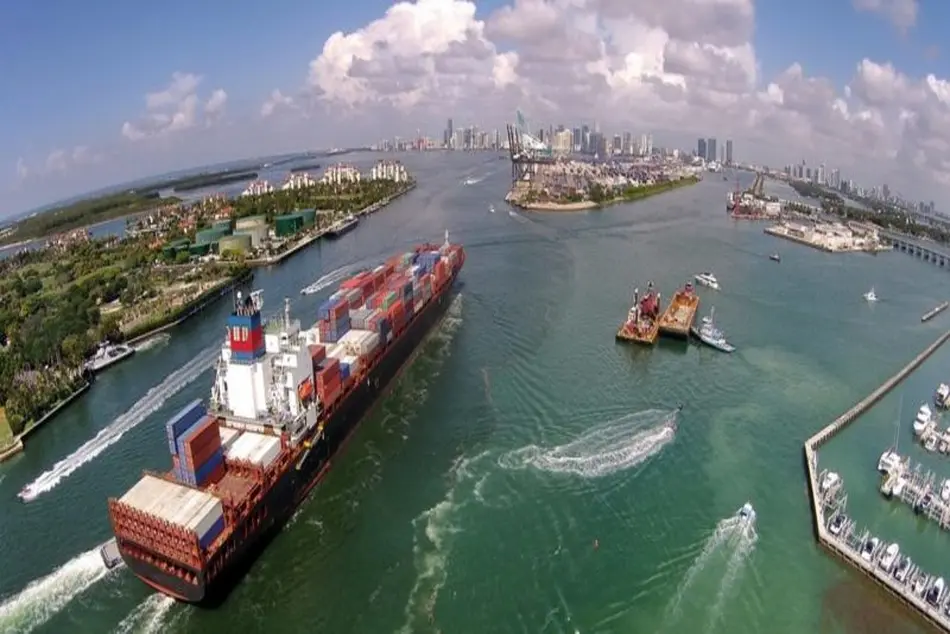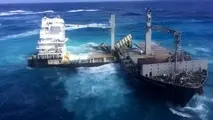NOAA Helps Big Ships Navigate PortMiami More Safely
Port officials in Miami along with the National Oceanic and Atmospheric Administration (NOAA) have dedicated a new real-time current mapping system that will help super-sized ships coming through the Expanded Panama Canal navigate the port of Miami more safely.

Port officials in Miami along with the National Oceanic and Atmospheric Administration (NOAA) have dedicated a new real-time current mapping system that will help super-sized ships coming through the Expanded Panama Canal navigate the port of Miami more safely.
NOAA and PortMiami have partnered to install the Physical Oceanographic Real-Time System (PORTS®), consisting of three new current meter sensors in PortMiami’s navigation channel. The current meters will provide critical real-time information to big ship operators to help facilitate safe transit into PortMiami.
Since the opening of the Expanded Panama Canal in 2016, PortMiami, along other ports on U.S. East Coast, have experienced an influx of bigger and bigger ships requiring billions of dollars in infrastructure modernization upgrades. In addition to the improved vessel safety, past NOAA studies have shown that a PORTS system, like the one dedicated by NOAA and PortMiami officials on Tuesday, can provide considerable economic benefits without having to expand port infrastructure.
“Through PORTS partnerships, seaports have the opportunity to increase the flow of cargo through their docks without the massive outlays normally associated with port expansion,” said Secretary of Commerce Wilbur Ross. “Thanks to the hard work of NOAA staff and those in the private sector, Miami will not only have a safer harbor, but will also see even greater economic growth. These are the types of strategic infrastructure investments we aim to make through the Commerce-led $20 billion ’transformative projects’ program within the President’s infrastructure initiative.”
According to NOAA, PORTS is a successful public-private partnership that reduces ship accidents by more than 50 percent, increases the amount of cargo ships can carry, reduces transit delays for commercial traffic, enhances recreational activities, and improves hazardous spill response. Before the addition of PortMiami, a NOAA analysis estimated as much as a $300 million annual benefit from an expanded PORTS system. Including PortMiami, there are 31 PORTS® in the country, supporting 85 percent of the nation’s cargo by tonnage.
The meters will provide ship operators with critical real-time information on currents that can help them better plan their transit and prevent accidents in and around the port. The system provides vessel operators with key environmental parameters in real time, including water levels, currents, waves, salinity, bridge clearance (air gap), wind speed and direction, air and water temperature and visibility.
In Miami, strong currents from the Gulf Stream run perpendicular to the shipping channel. The current meters will give vessel pilots the accurate, real-time data they need to make navigation decisions to direct the larger ships into port.
“Ship sizes are pushing the limits of seaport infrastructure, and vessel operators need better information to make safe navigation decisions,” said retired Navy Rear Adm. Tim Gallaudet, Ph.D., assistant secretary of commerce for oceans and atmosphere and acting under secretary of commerce for oceans and atmosphere, who attended the ceremony. “By participating in PORTS, PortMiami is making an investment in a safer seaport and more robust shipping economy.”
Also attending the ceremony was Neil Jacobs, Ph.D., assistant secretary of commerce for environmental observation and prediction.
“The partnership between NOAA and PortMiami enhances our seaport’s advantages,” said Miami-Dade County Mayor Carlos A. Giménez. “The new real-time technology provides critical information for the industry’s big ships. It represents a fast, efficient, and safe entry into Miami’s channel, allowing more vessels to pass through benefiting our local economy.”
PortMiami is one of the nation’s busiest ports and is recognized globably for being a major cruise industry hub. Overall, the port contributes more than $41.4 billion annually to Miami-Dade County, and generates 324,000 direct, indirect, and induced jobs.
by gCaptain



